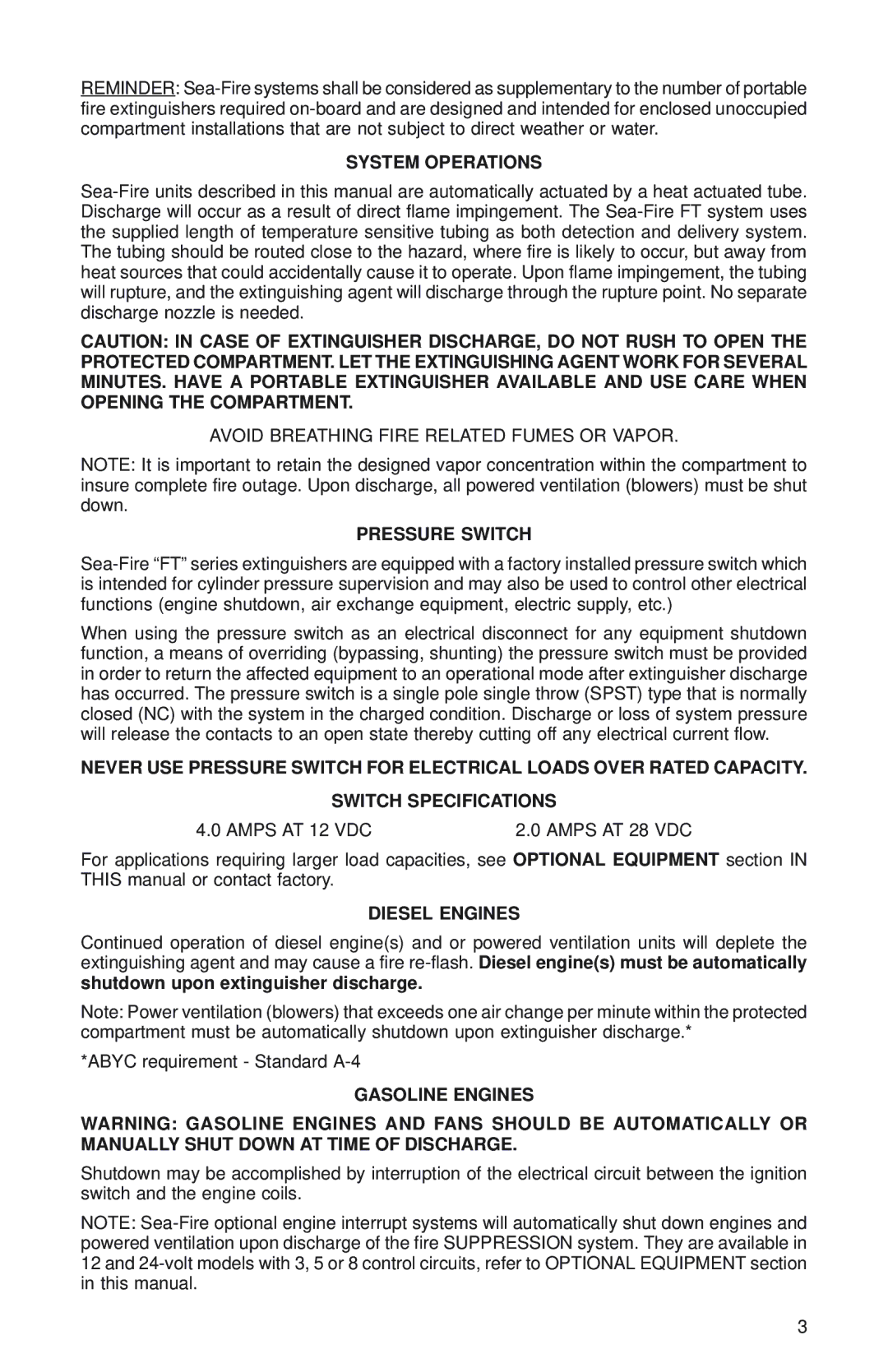FM200 specifications
Sea-Fire FM200 is an advanced fire suppression system specifically designed for marine environments and critical asset protection. This highly-effective system utilizes hydrofluorocarbon (HFC-227ea) as its primary extinguishing agent, which is known for its excellent firefighting properties. The FM200 system is particularly favored for its ability to put out fires without causing damage to sensitive electronic equipment, making it an ideal choice for vessels, offshore platforms, and industrial facilities.One of the main features of Sea-Fire FM200 is its rapid-fire extinguishing capability. The gas can suppress flames in just ten seconds, significantly minimizing damage and ensuring safety. This quick-response characteristic is critical in marine environments where fires can spread rapidly and pose severe risks to life and property.
The Sea-Fire FM200 system is designed with a flexible configuration, allowing it to be tailored to fit various vessel designs. This adaptability includes options for multiple storage containers and different discharge nozzles, ensuring comprehensive coverage of the protected area. This flexibility is crucial for accommodating the varying layouts found on ships, allowing for optimal placement of the system's components.
Another notable feature is the system’s automatic activation capability. Integrated with the latest detection technologies, Sea-Fire FM200 employs advanced smoke and heat detectors that can autonomously trigger the suppression system in the event of a fire. This automated functionality enhances safety by providing immediate response even in situations where personnel may not be present.
The Sea-Fire FM200 system also emphasizes ease of maintenance and reliability. Regular checks and servicing can be done without extensive downtime, allowing vessels to maintain operational efficiency. The system's components are designed to withstand harsh marine conditions, ensuring long-lasting performance.
In terms of environmental considerations, FM200 is often chosen for its low ozone depletion potential compared to other agents. It consists of a clean agent that won’t leave residues, making post-fire clean-up easier and minimizing the impact on marine ecosystems.
In summary, Sea-Fire FM200 stands out as a superior fire suppression solution in the maritime industry. With rapid extinguishing capabilities, flexibility for various installations, automatic activation through advanced detection systems, low environmental impact, and durability, it serves as a critical component in safeguarding vessels and valuable assets from the devastating effects of fire.
